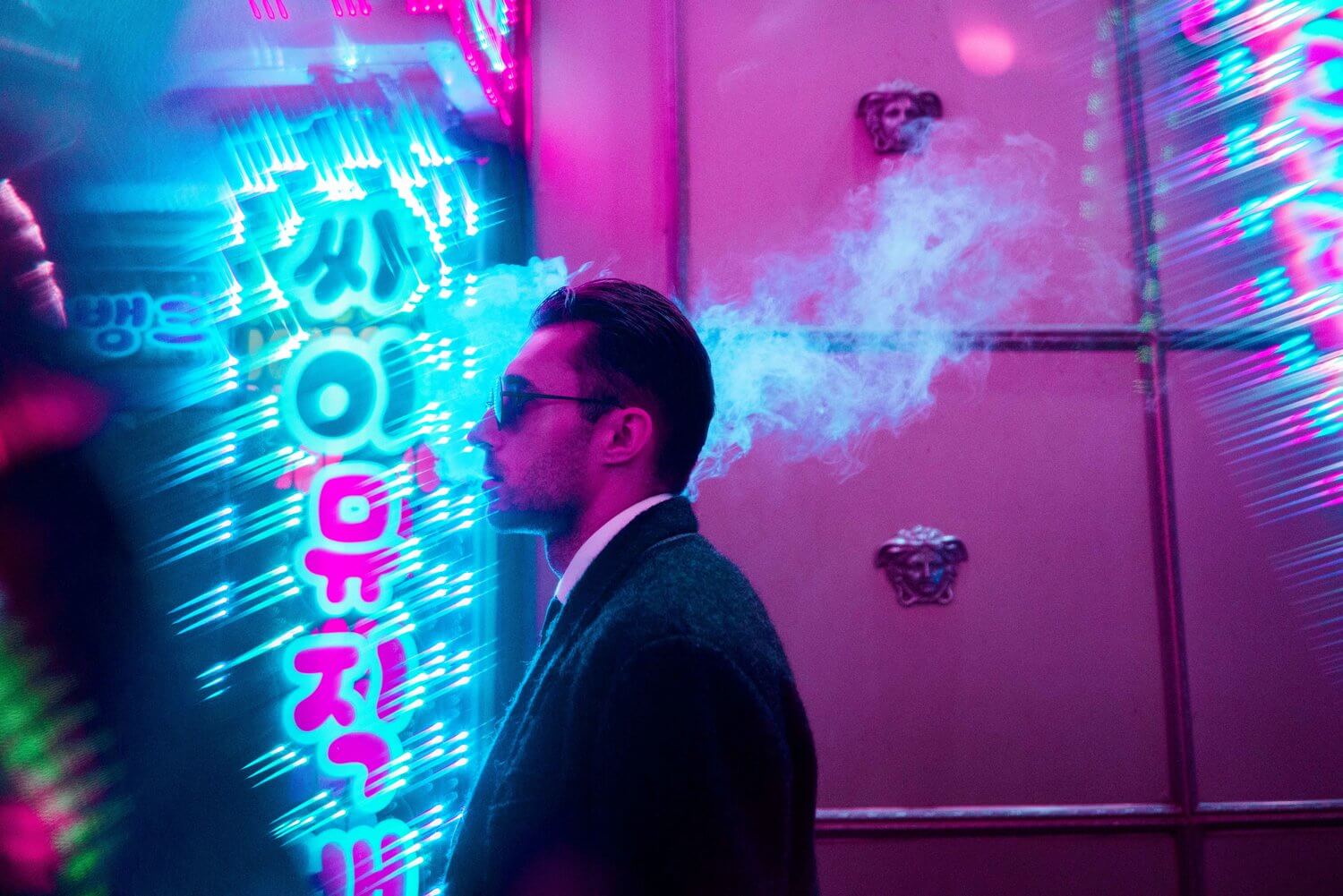Amazing lifestyle and portrait photographer Steve Roe teamed up Dominic Gould for a shoot in which he brought along his Fractals. The results took the internet by quite a storm, ending up on quite a few blogs, including the very influential kottke.org. It's no surprise as to why. Steve did an excellent job at juxtaposing a sleekly dressed dark character against a futuristic, bright background. As he recalls:
For this shoot, I wanted to recreate the drug scene from the first episode of Altered Carbon, (a Netflix series that's a must see) where the main character starts to see holographic neon signs all around him after taking a drug in the form of an eye-drop.
We're going to explore the photographic techniques he used to create these photos, as well as the visual and mental approach he took to create a strong visual experience for us to enjoy.
Night photography
Learning how to successfully shoot images in dark environments is a bit different than shooting during the day. Many people would chalk it up to being as simple as widening your aperture, pointing, and shooting. However, at night, proper composition of your photos matters, even more than in the day. Why?
Dark scenes typically have less visually contrasting elements than bright ones, so at night, you can use your environment to position your subject in a way that really allows them to pop. Steve achieved this perfectly below:
by steve roe
Lens: SAMYANG AF 35mm F2.8
Focal length: 35mm
- Shutter1/30
- ISO1600
- Aperture2.8
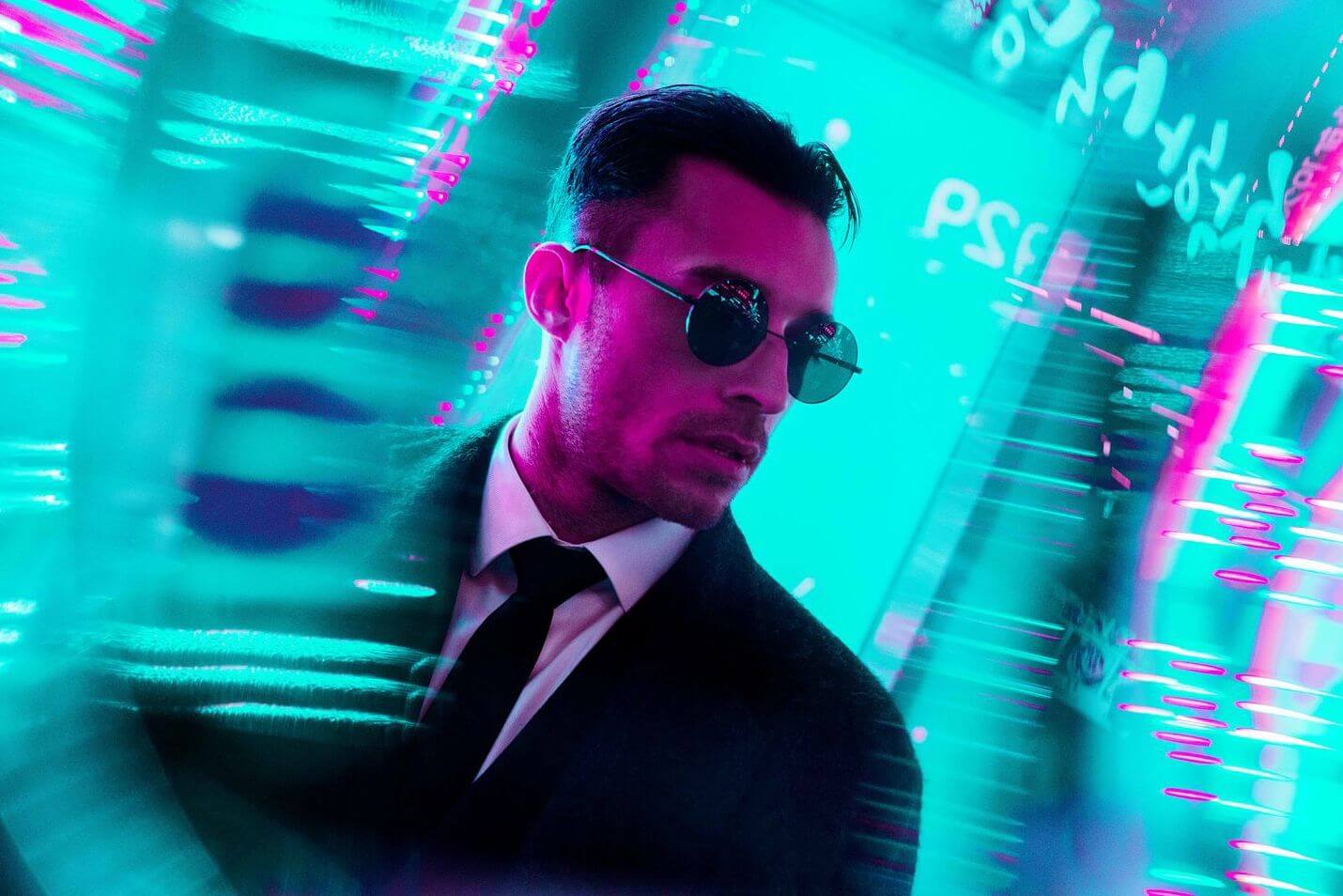
The subject is dark, yet the surrounding background contrasts strongly because it's so bright. The result? The human eyes travel straight to the contrasted object—in our case, the man in the jacket; creating an image that's easy for the brain to comprehend, easy to interpret, and visually appealing to look at. In other words, a great image! 😜
Tips for night photography
- Be extremely mindful of your shooting mode
We know the drill. Shooting on manual is often the way to go, but this is especially true at night. Aperture-priority, at the very least. Open that lens up and shoot as fast as you can, and adjust other settings accordingly.
- Shoot for strong contrast
At night, it's all about the contrast between your subject and the background it sits against. Try to make sure your subject will 'pop'—place them against something bright, or light them up with a strobe. Another great example can be found here. You'll notice your eyes travel straight to the model in the picture—lending to a pleasant viewing experience.
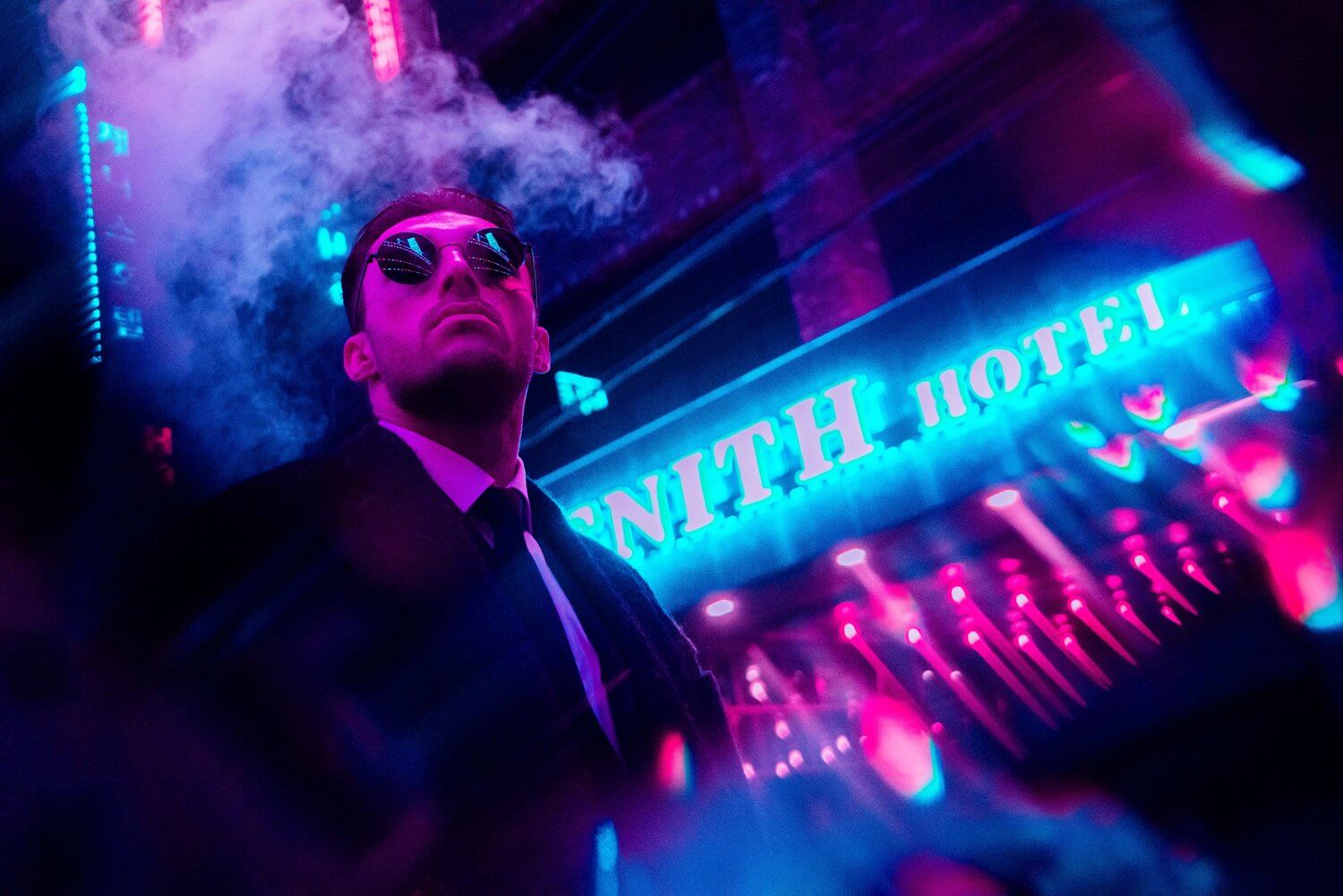
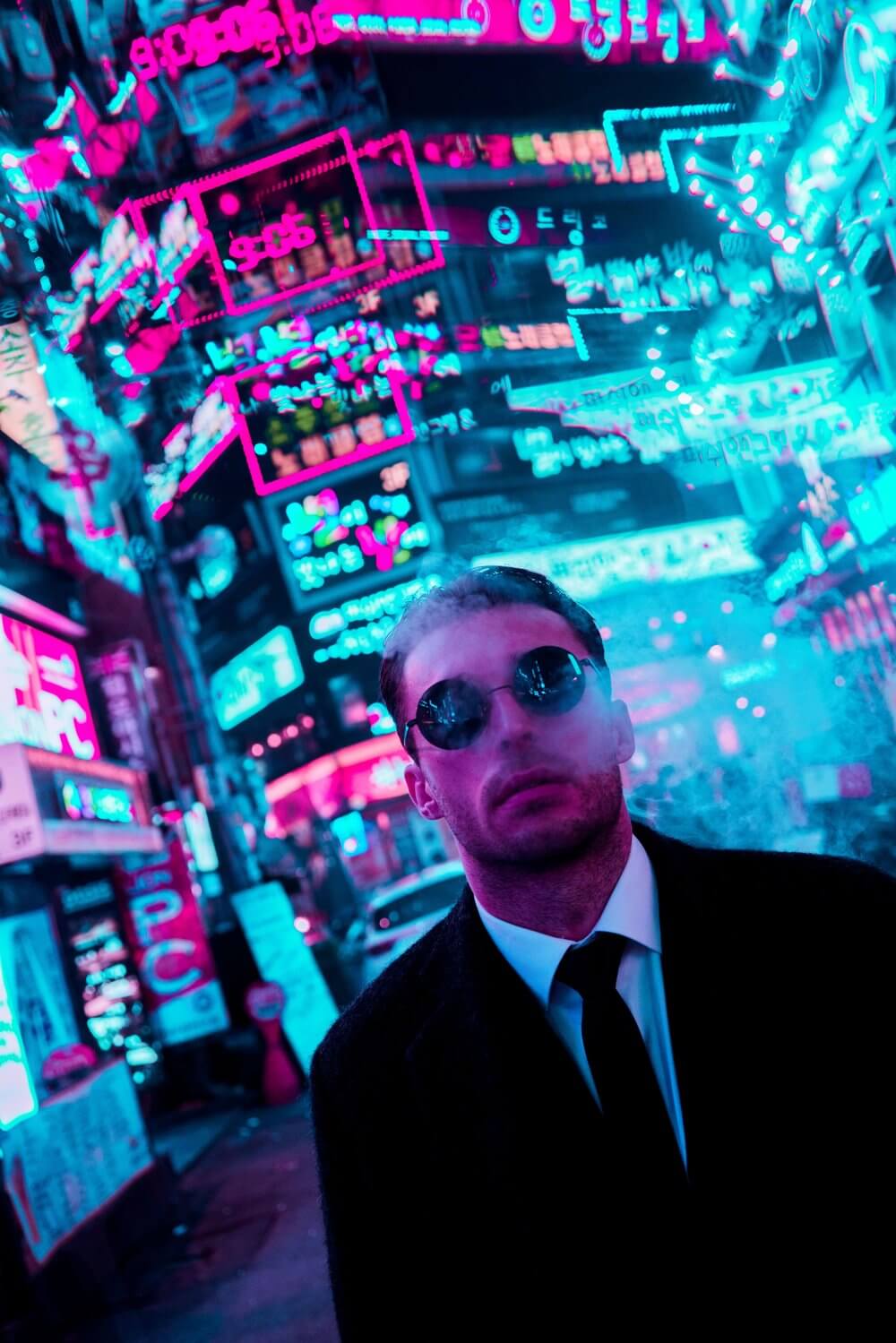

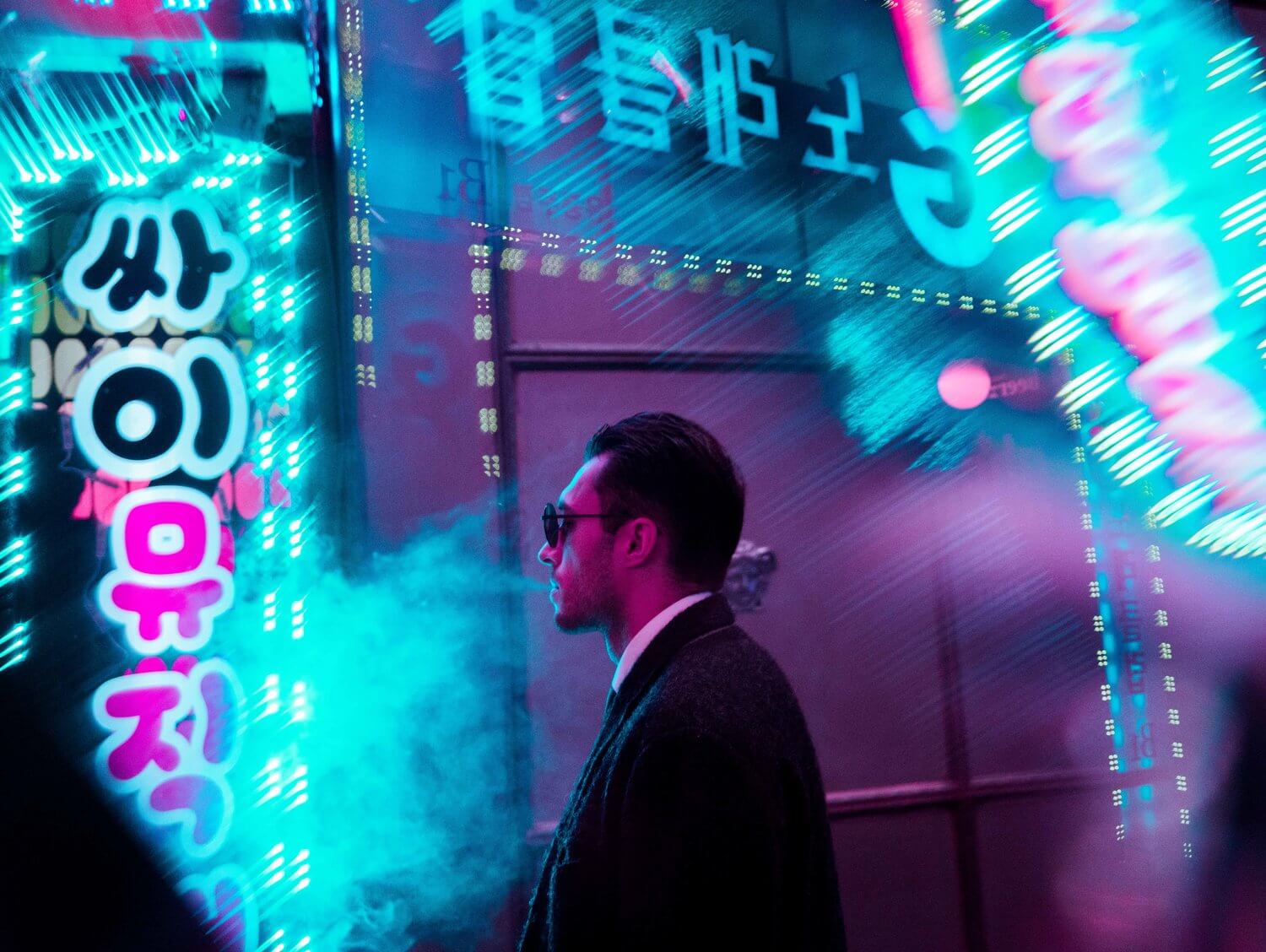
Portrait backgrounds
Steve also did an incredible job at composing the shots he took. We all know composition is an important part in creating a visually appealing image, but we're not always mindful in the way we frame our subjects.
The art of photography shares striking similarities to other forms of art, like painting, (and by extension design in general) where artists spend several hours (and in some cases, far longer), deciding what objects to place where on their canvas. While we often don't have the ability to plan these items so meticulously when shooting photos, we still need to be aware that the placement of every object in the frame, foreground and background alike—will determine how effective our image is at conveying our intent.
In the field of visual design, this is common knowledge necessary to functioning properly in the field. Designing for the human mind is something we must be aware of if we're going to be able to create attractive art ourselves. This typically works as an unspoken rule of thumb in photography, but it's importance in our ability to create strong images is a good thing to be reminded about.
For example, the photographer's inability here to include more visual space above the subject's head makes the photo feel cramped and therefore lends to a less pleasant visual experience. Photographers need to be very mindful of the ways the subconscious mind interprets the contents in an image to then decide whether an image appears harmonious or not—it can make or break your photos!
Another successful example of this is below, where Steve used his Fractals to visually encapsulate his subject, further separating it from the background and making it easy for the viewer to discern the contents of the image. Well done!
by steve roe
Lens: SAMYANG AF 35mm F2.8
Focal length: 35mm
- Shutter1/60
- ISO3200
- Aperture2.8
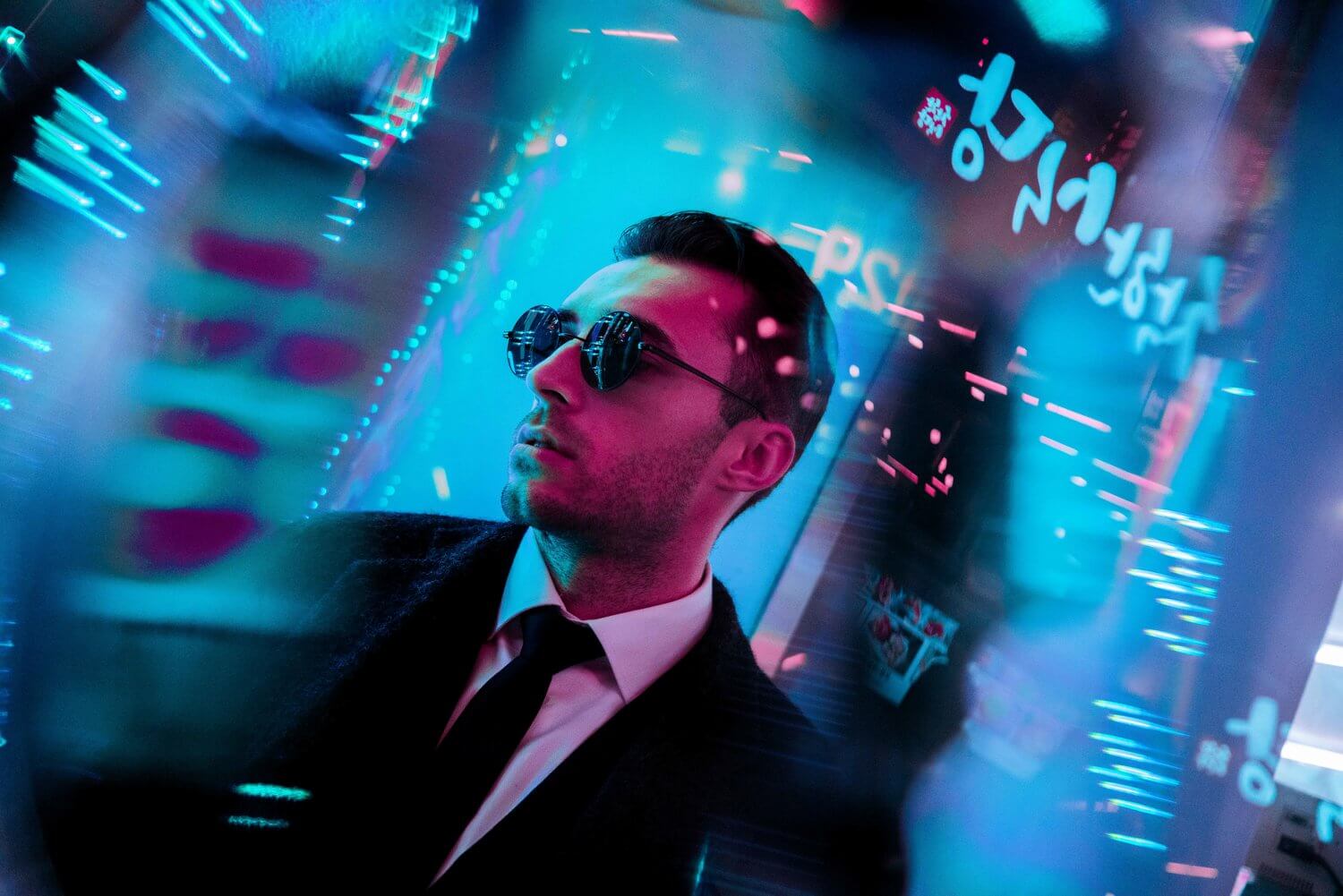
Color correction and camera settings
Steve was also very effective in using color correction to make his portraits feel cold and dark—further creating an environment that complements the clothing and expression that his subject expressed. Had he instead used a warm color balance for the photos, there would be less synchronicity between the cold demeanor of the model and the overall feel and look of the photo.
It's important to keep in mind that post-production is a second chance to further enhance the initial vision and idea that we initially had when taking a photo. In post-production, we can remove, change, add, or remix colors to create vividly different feelings for the end user. Knowledge and mastery over these tools can help us create better experiences. Anecdotally, I am always very particular about each hue I've baked into each image and the specific reason as to why. If we're serious about our shooting, no setting should be determined without taking into account logic and reasoning.
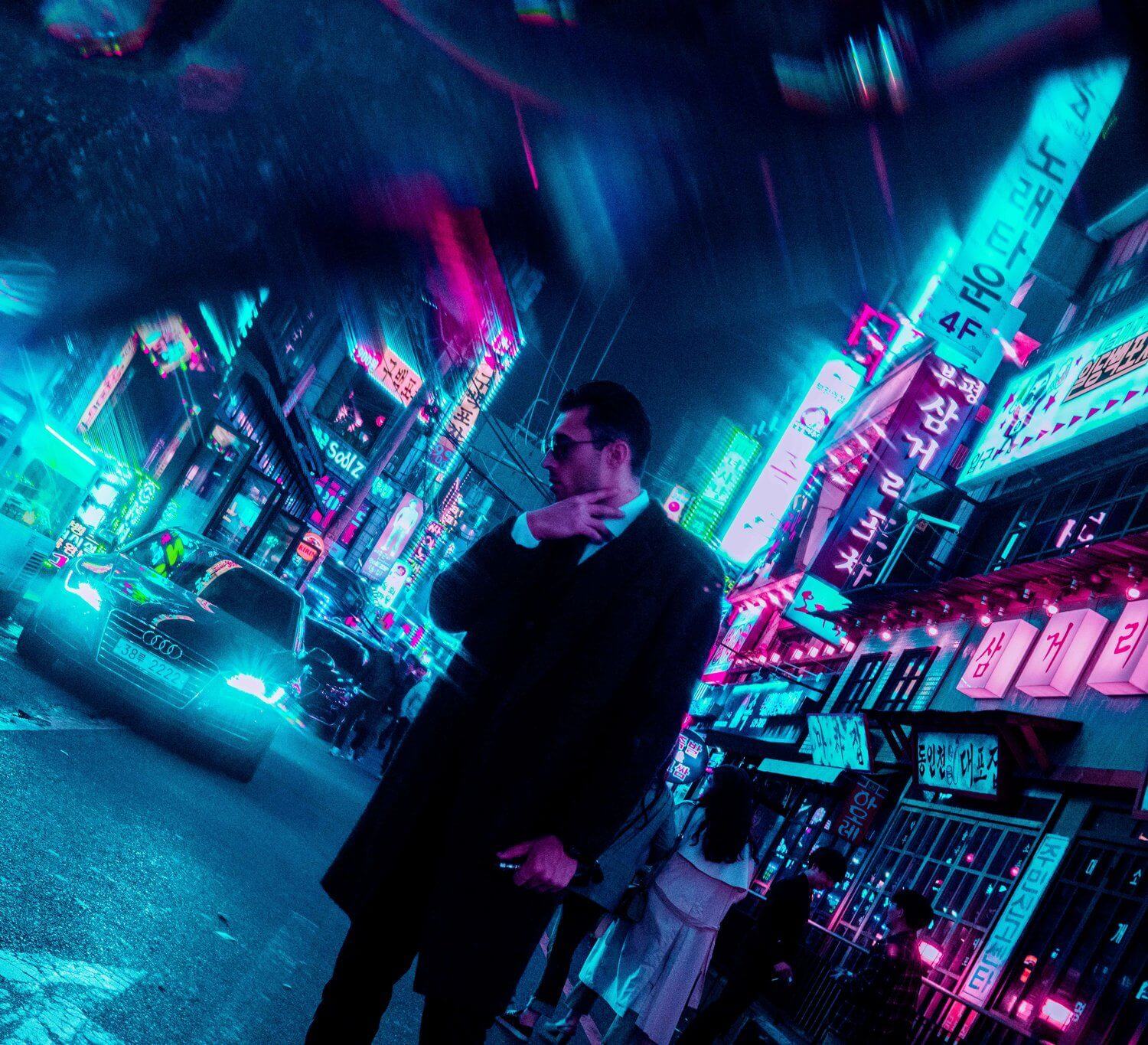
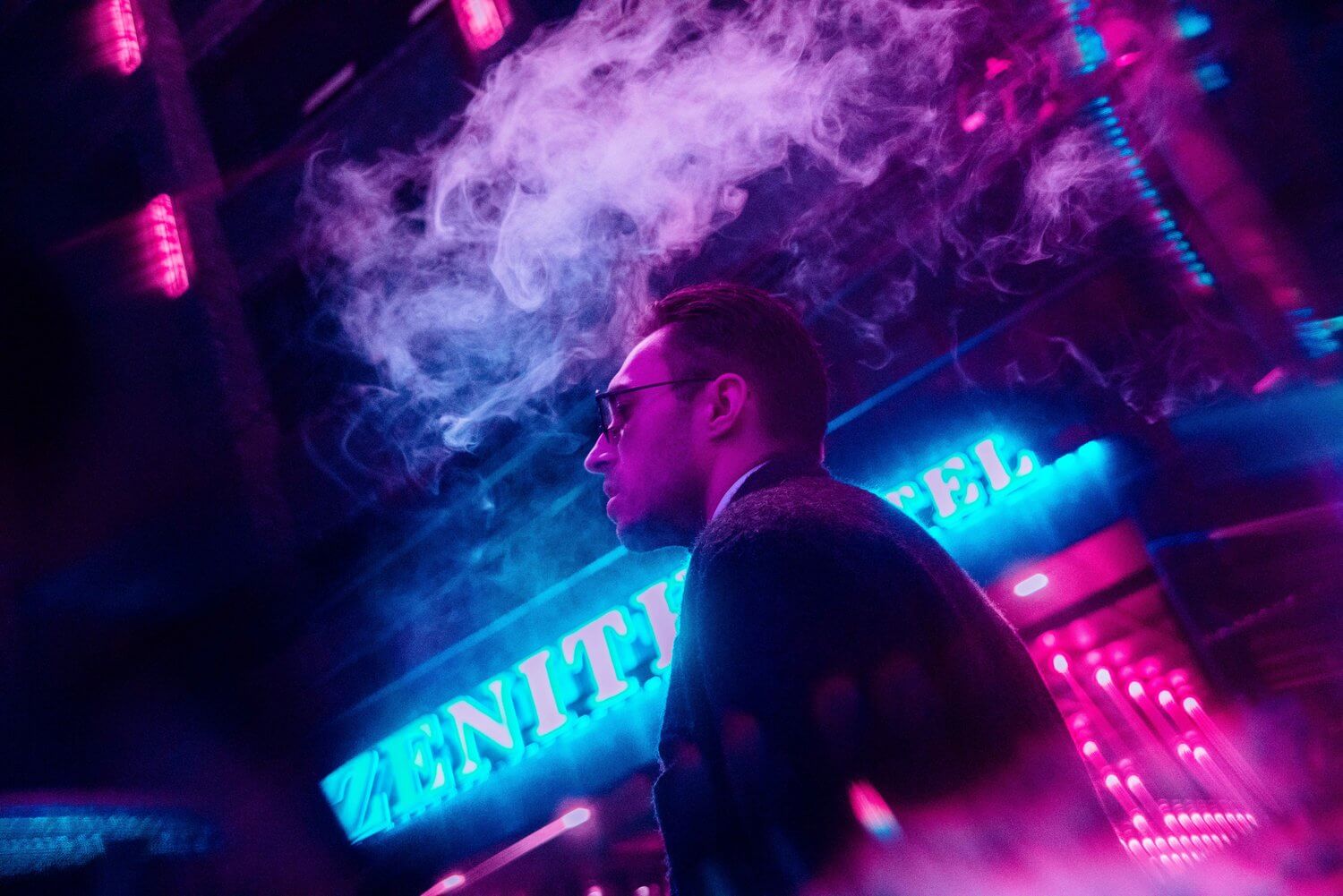

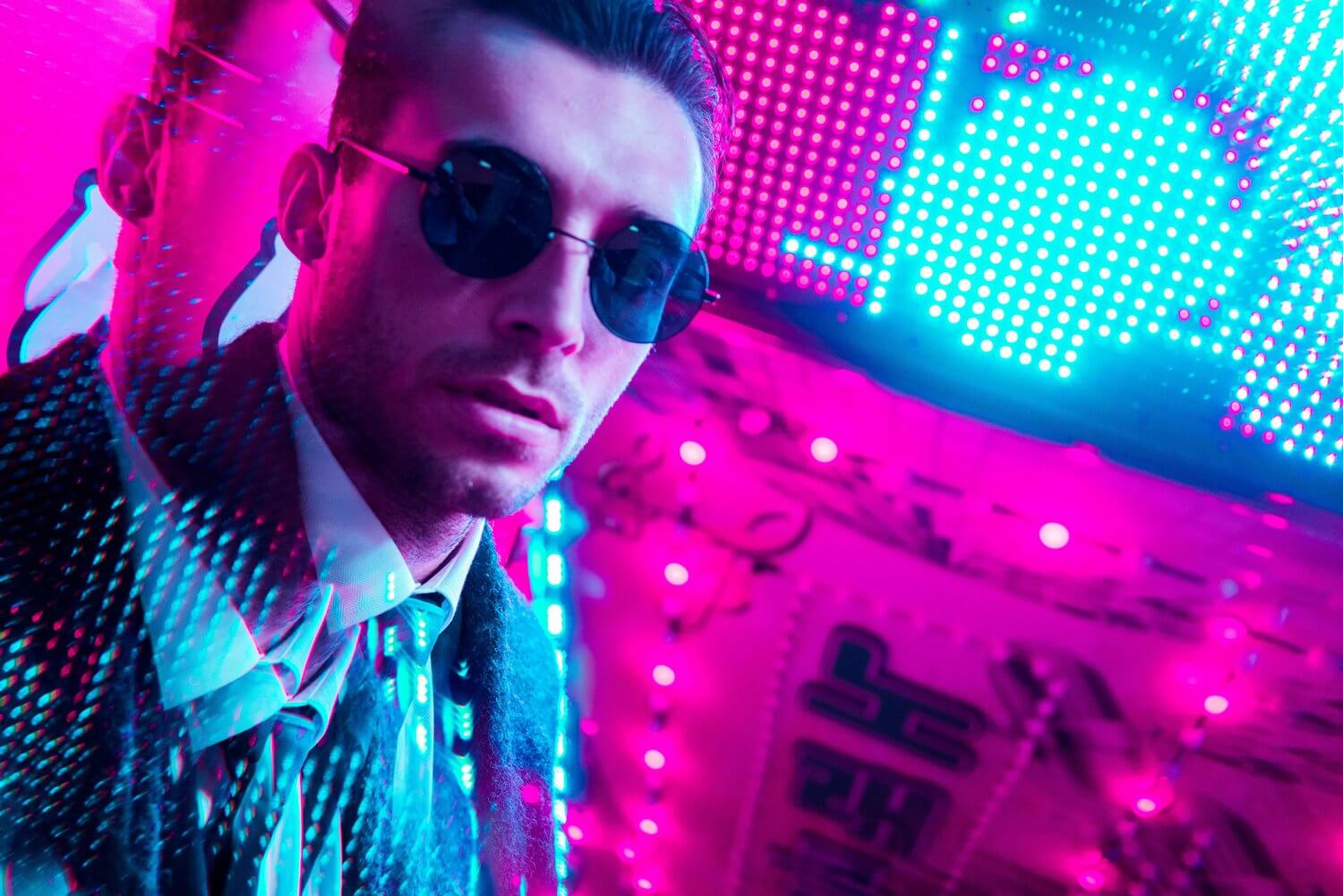
Portrait photography tips: shoot outside the lines
We often get so obsessed with our subject and the task at hand that we micro-focus in and lose sight about the world around us. We pay quite a high price for this oversight. Often, we're able to more effectively tell a story by sharing less relevant details and escaping rigid plot lines that we may have hyperfocused on. Steve does a great job in his shoot at making sure to take pictures of surrounding objects and details that he could later use if he ever wanted to turn his shoot into a photo story or something of the like:
by steve roe
Lens: SAMYANG AF 35mm F2.8
Focal length: 35mm
- Shutter1/20
- ISO800
- Aperture2.8

Details can provide your viewers with more context into the story that you're painting into their head with your pictures. The right details, placed in the right areas, can really help build a stronger overall visual experience.
Portrait photography: build an experience
Shooting attractive portraits requires a holistic approach. W must think hard about the attire of our models, whilst paying special attention to the colors and accents on their outfits. Props are also important visual cues which can better set the stage for the story we're trying to tell. In Steve's images, the model is smoking—which creates further darkening undertones that complement the overall scene. Alternatively, we could have imagined him on a motorcycle, etc.
- You're not a photographer, you're a storyteller
Approaching portrait sessions as though you have an important story to tell will help you better create a scene in your mind which can determine how you pose your subjects, decide their outfits, etc.
- The devil is in the details
What are the most iconic movies you've seen? What made them so enthralling? Movies like The Dark Knight have a dark undertone—including costuming, language, and film grade which are carried on throughout the movie. Other movies, like The Sound of Music are extremely bright, quick, witty, and joyful—which help lend a overtone of brightness onto an audience. These experiences are not crafted by accident—in fact, they take large, experienced creative directors years to pull off. We're lucky as portrait photographers to have the ability to create visually striking scenes using only a few props and some color adjusting!
Tips for sharing your photography
Steve demonstrated absolute mastery at creating a scene, telling a story, and working through post to create images that people will surely continue to enjoy for decades.
What are your strengths when it comes to crafting a hollistic photo experience? How do you approach the daunting tasks of preparing your model's wardrobes, getting their props, choosing a location, and pulling off a masterful shoot?
We want to hear about it! Write to us in the comments below.
Find the artist
Get featured for your work
If you have something to share, we'd like to feature you like we featured Steve. Send us your images! You'll get a search engine boost from our links to your site, as well as massive street cred in the prisming community.
All you have to do is send us your images. The rights to your photos remain completely owned by you.
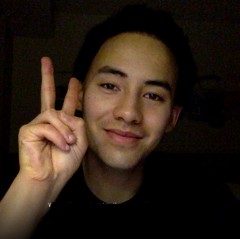
Published by Nikk Wong
Nikk Wong is a photographer, probably very much like yourself. He began his career shooting weddings and portraits, but quickly became obsessed with prism photography. Now, he spends his time building lenses and products in an effort to bring the magic of prisming to a mainstream audience. (Can I stop talking about myself in third person now?) 🙃